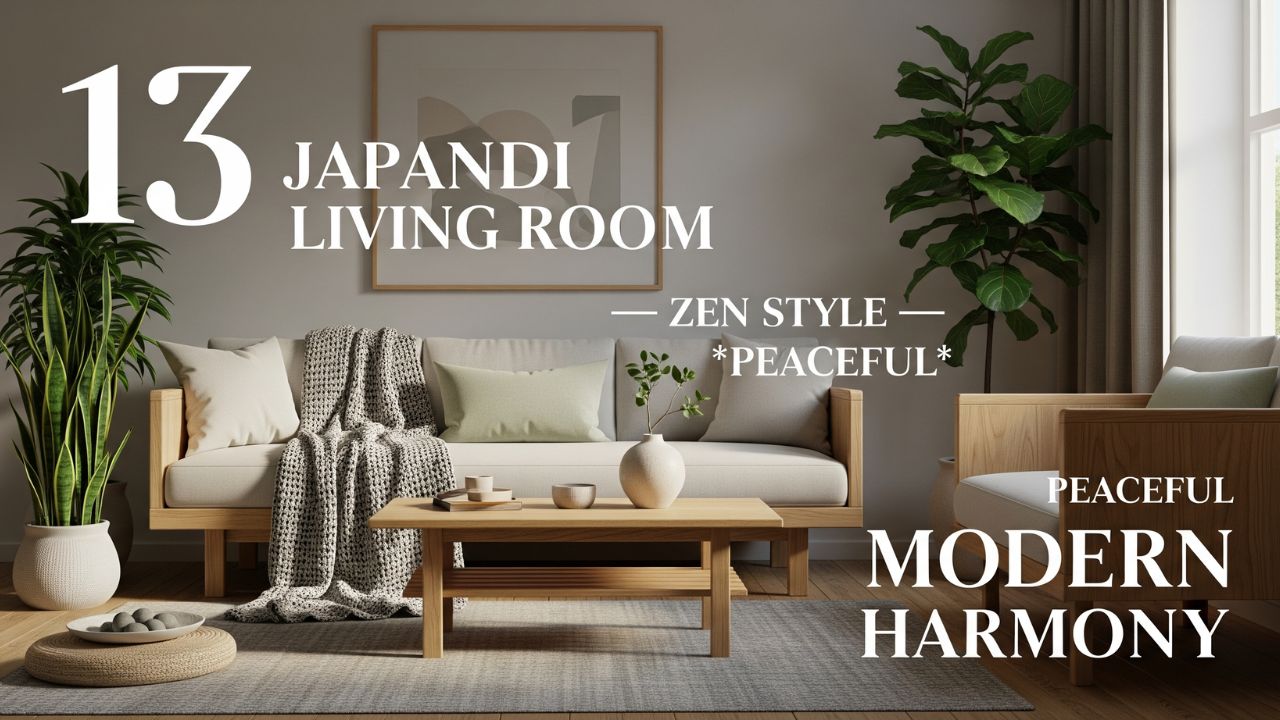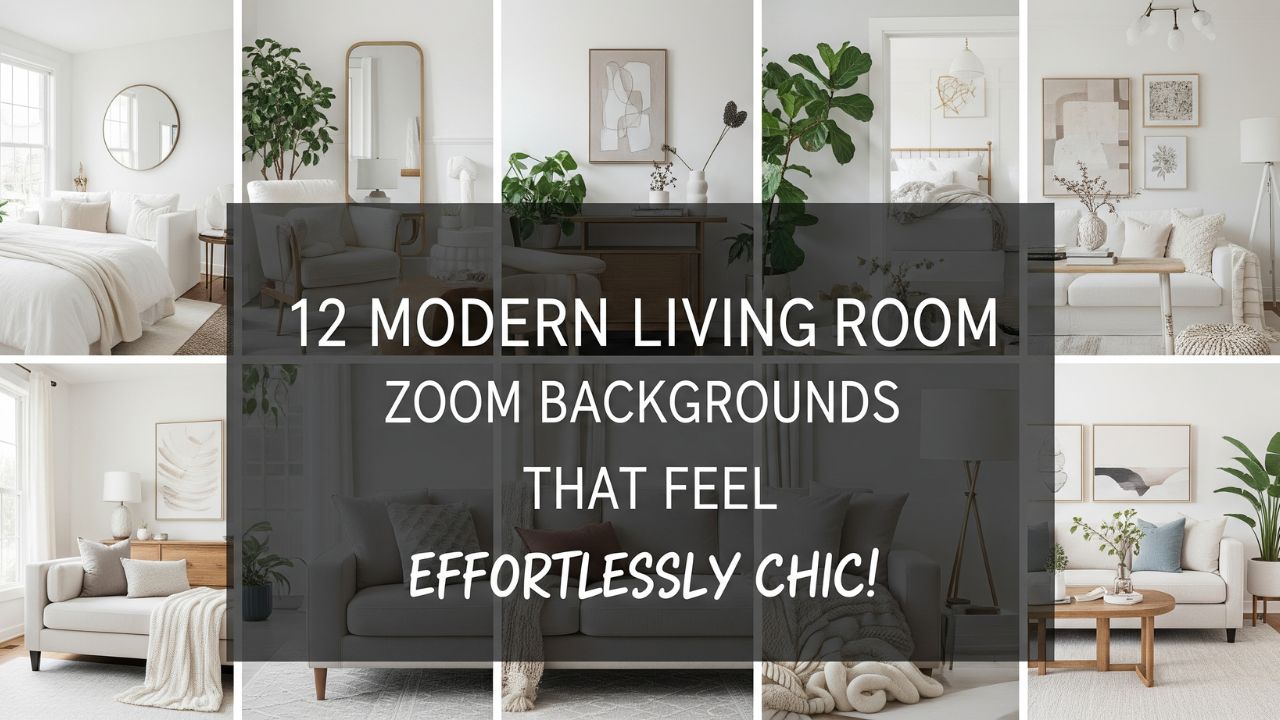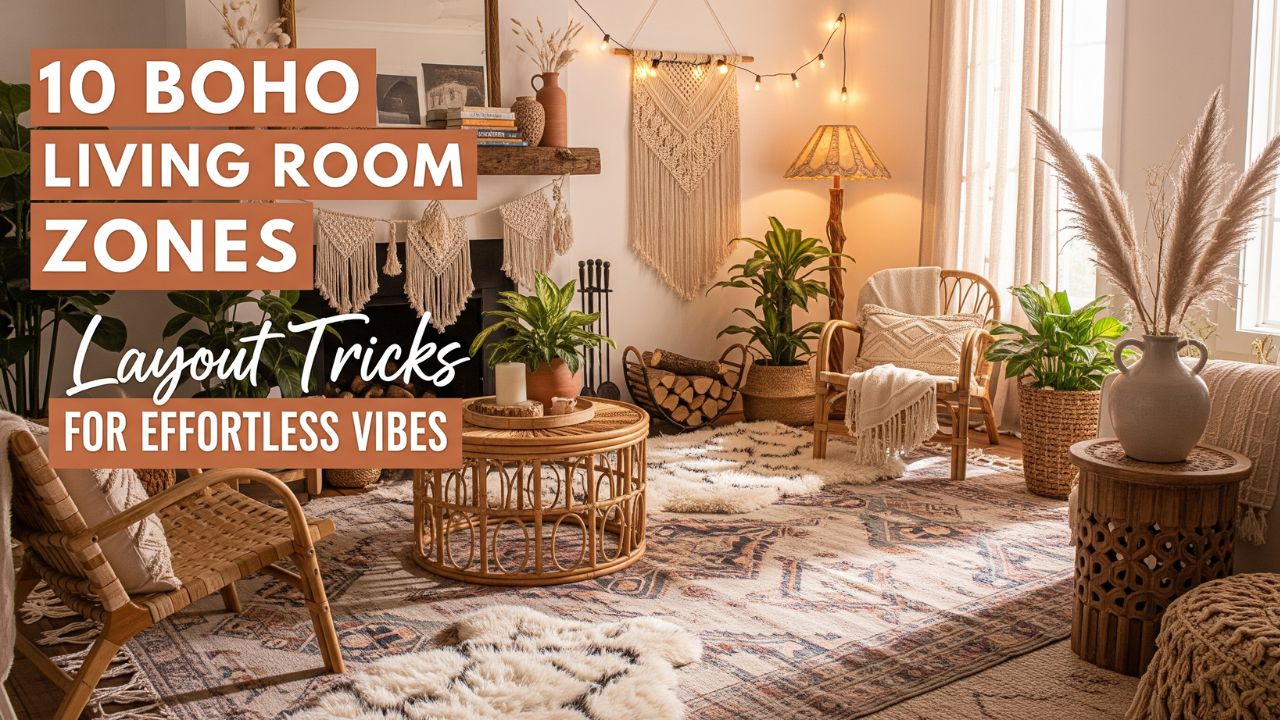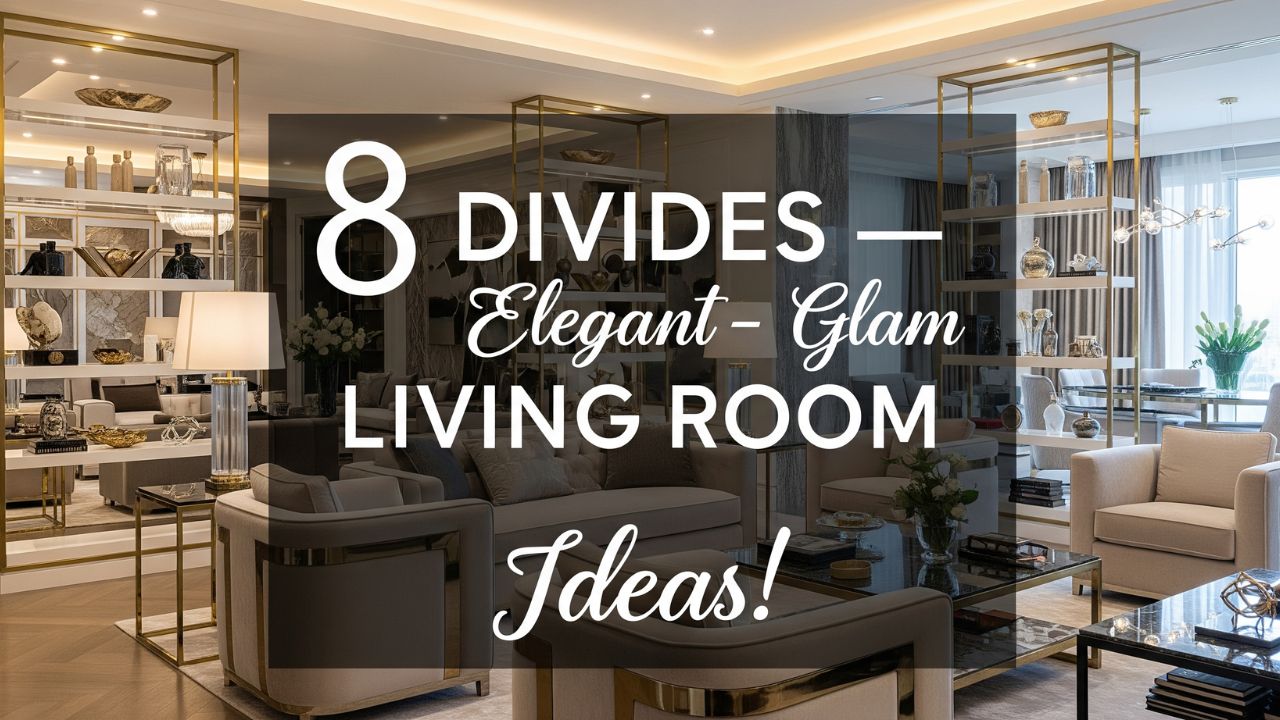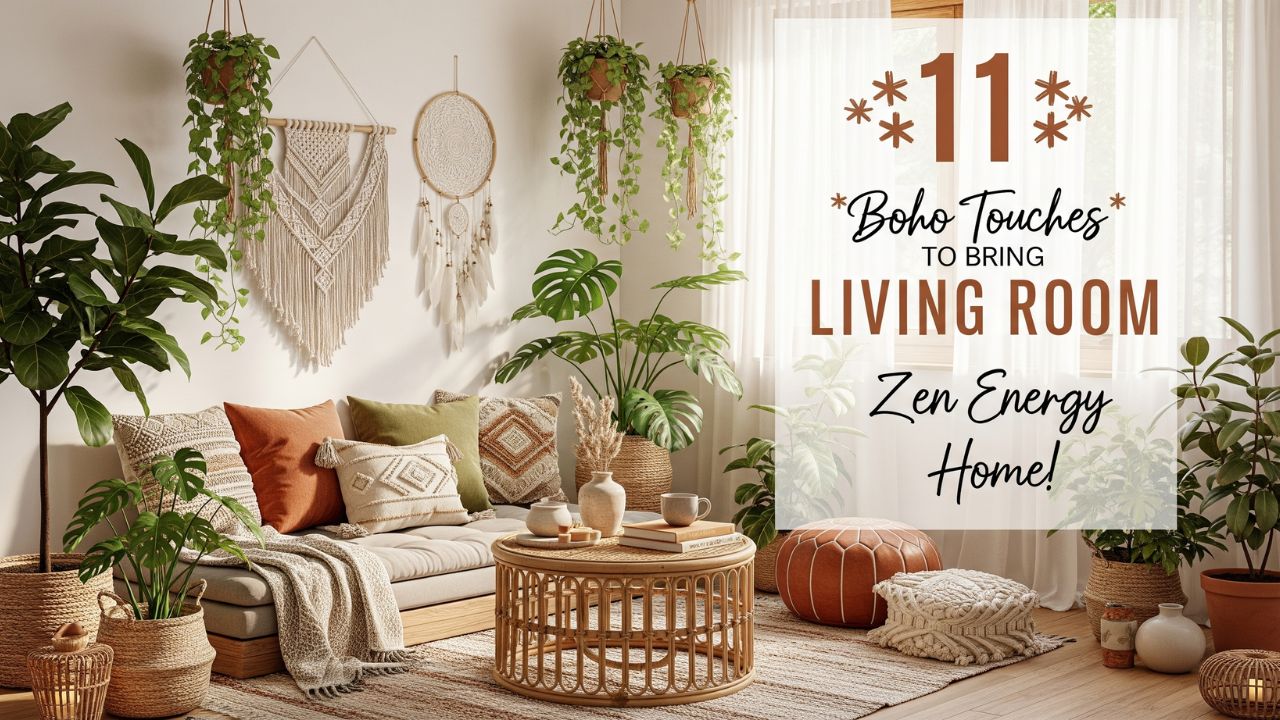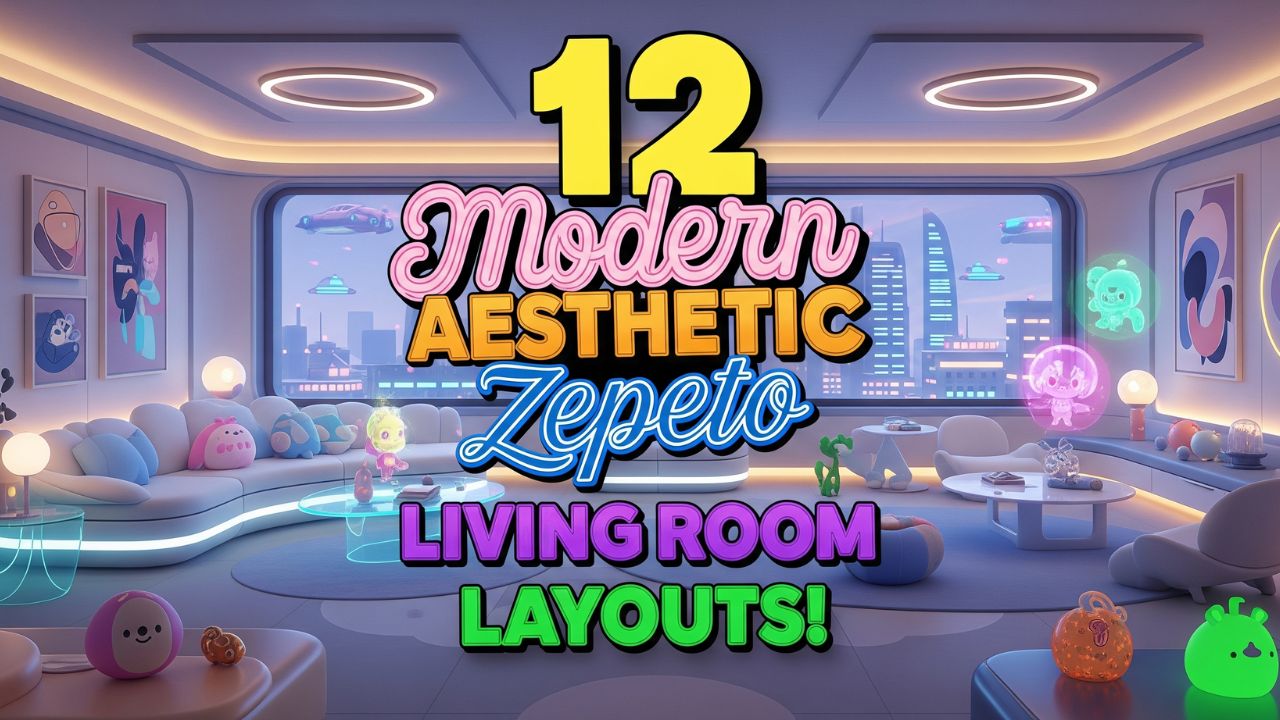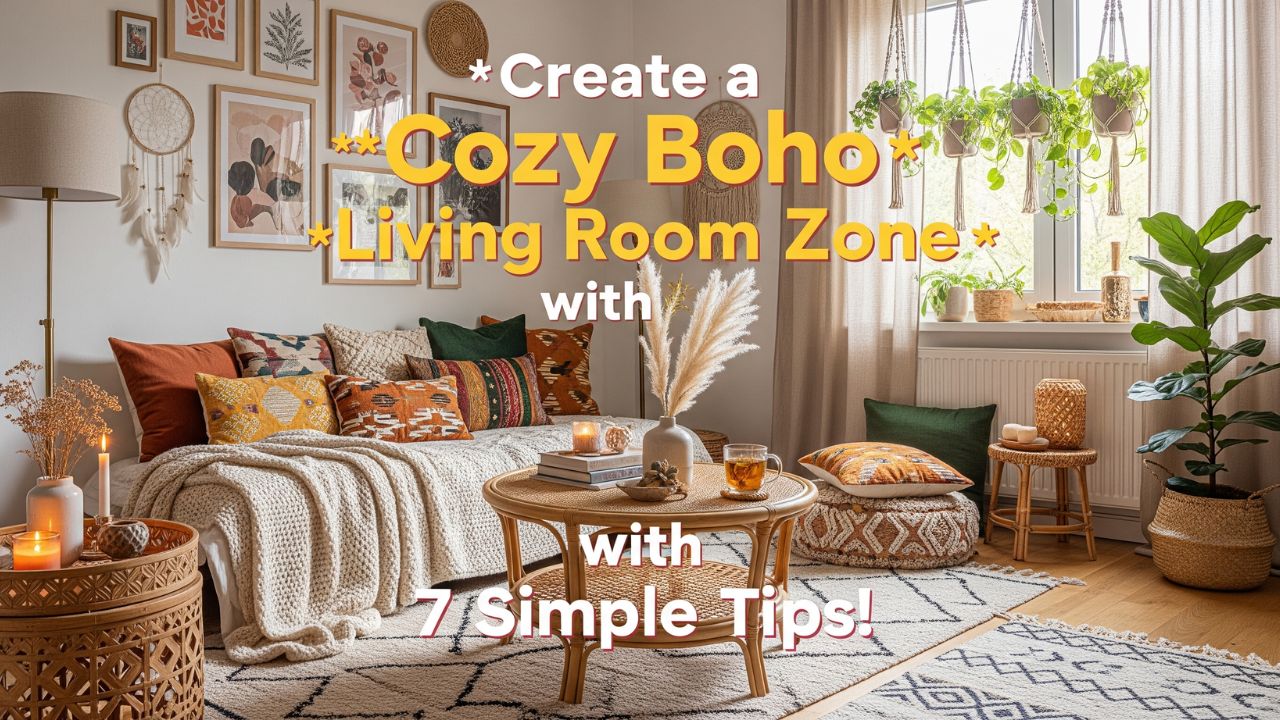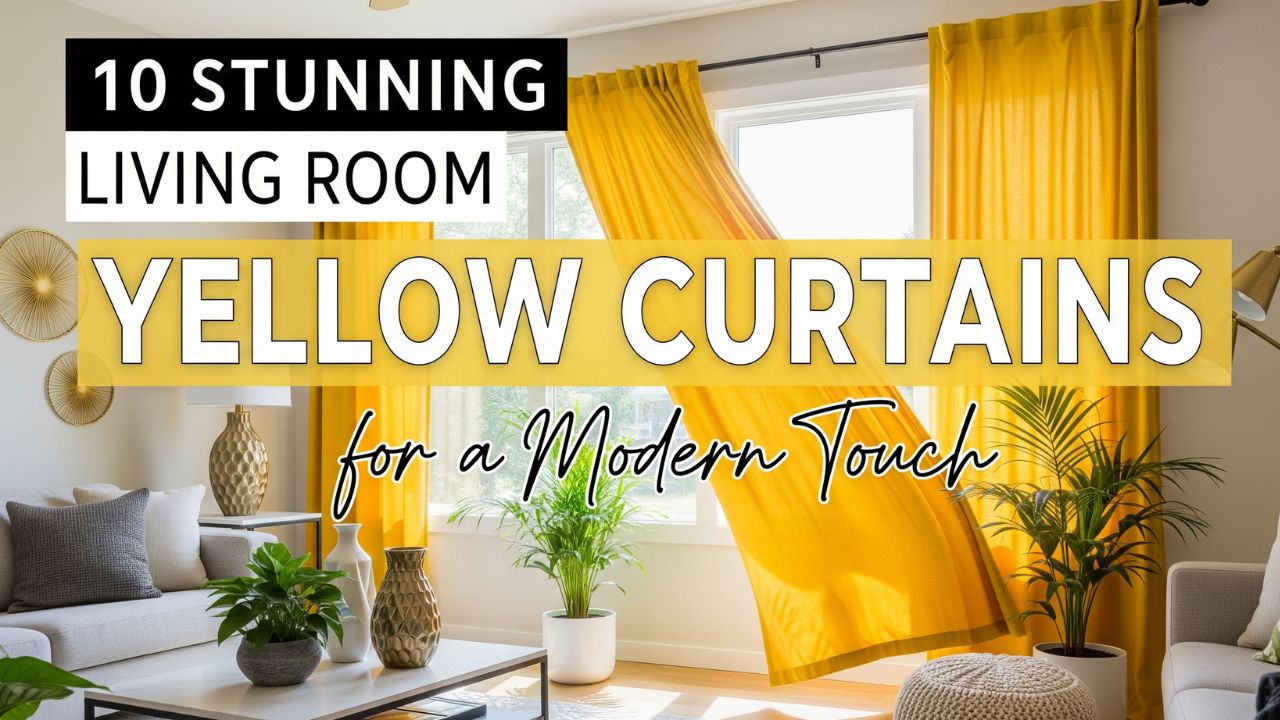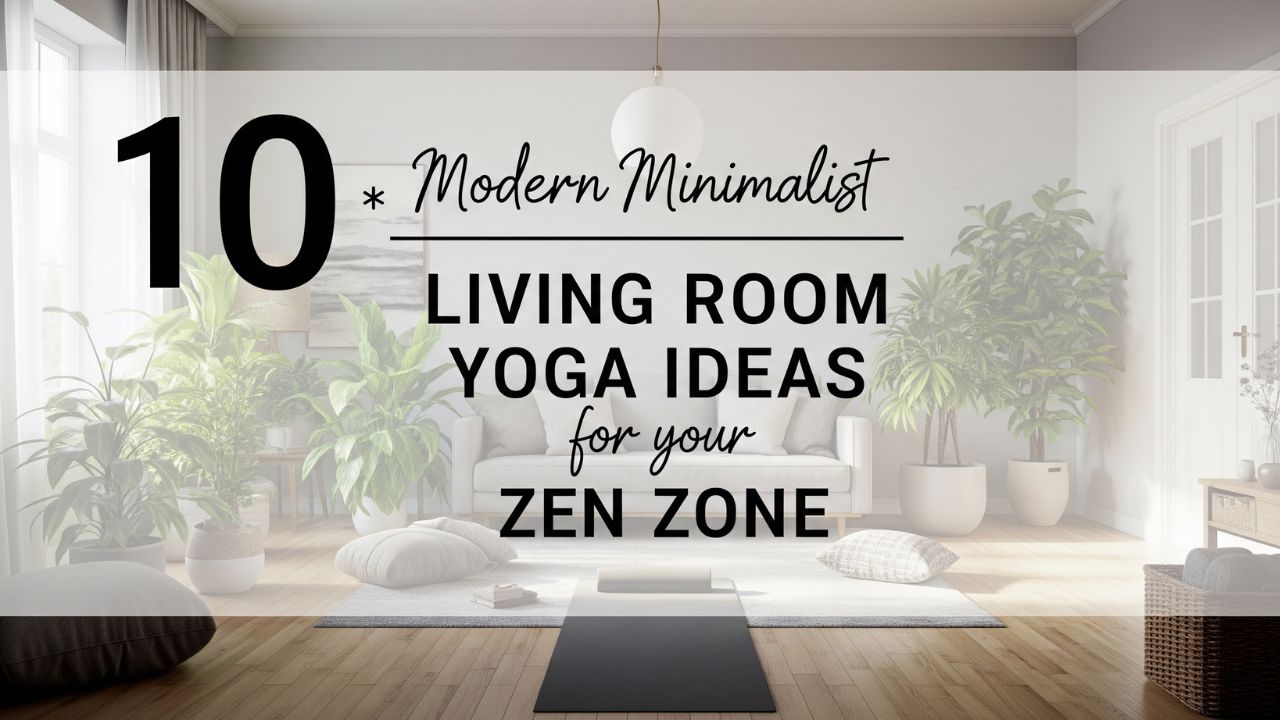a style where the old soul of design meets the crisp energy of the contemporary world.
It’s not just about mixing old furniture with new ones; it’s about creating a story — one that weaves nostalgia, craftsmanship, and comfort with a touch of modern simplicity.
Do you know that many of today’s interior design trends — like curved furniture, warm neutrals, and brass accents — are actually reimagined nods to mid-century modern design from the 1950s and 60s? History really does have a way of circling back in style.
If you’ve ever stood in your living room wondering how to get that perfectly balanced vintage-modern look — one that feels both cozy and chic — this guide is for you. Here are 7 transformative ways to nail the look beautifully without making your space feel dated or overly minimal.
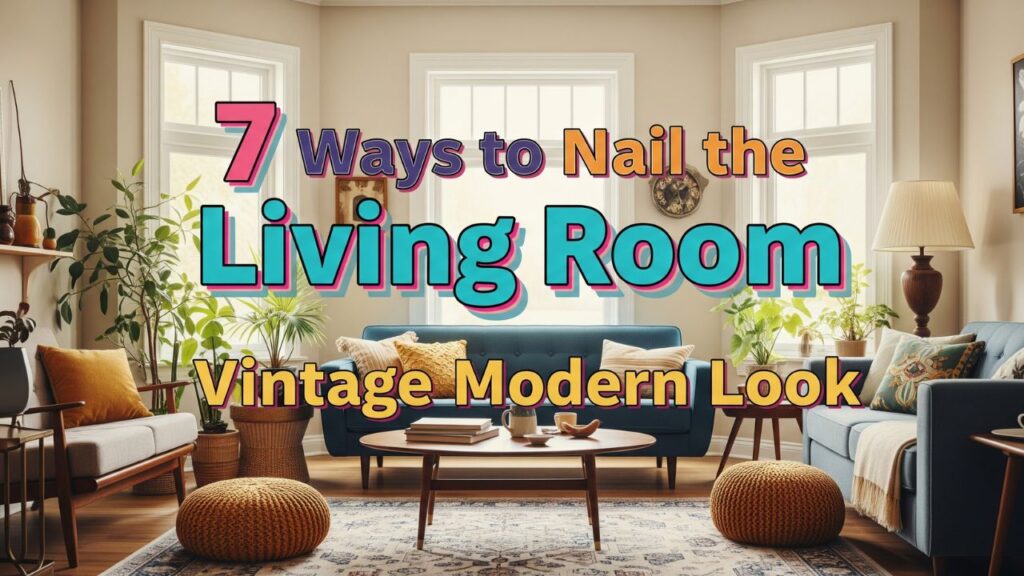
Table of Contents
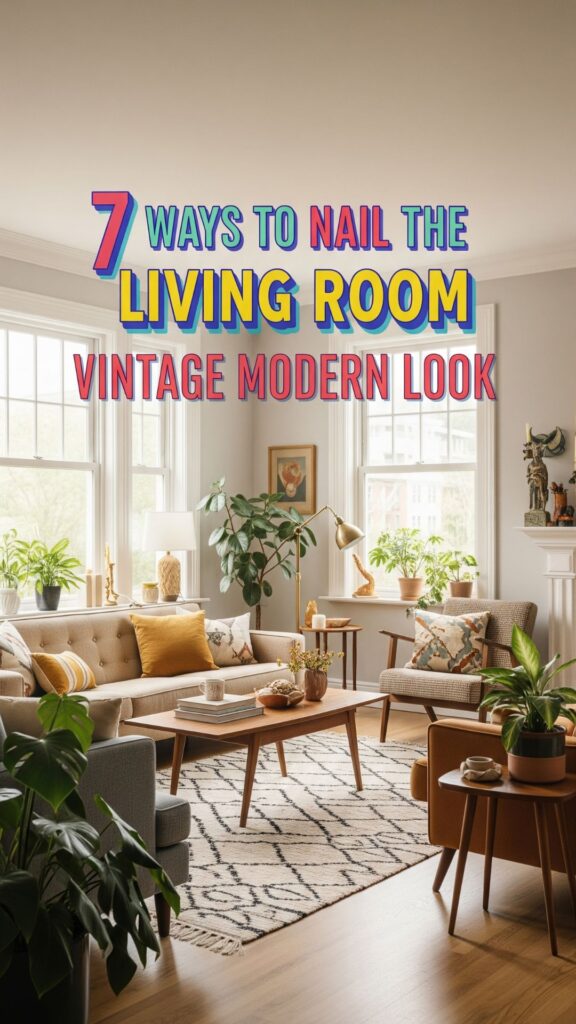
7 Ways to Get Living Room Vintage Modern Look
1. Mix Timeless Vintage Pieces with Modern Simplicity
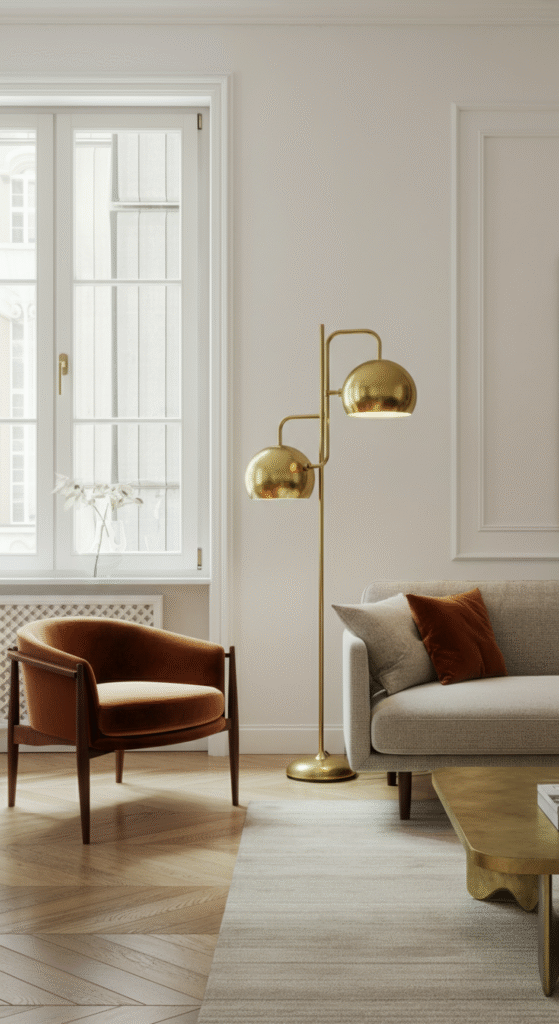
The key to a successful vintage modern living room lies in balance. Vintage pieces bring character and a sense of history, while modern ones bring function and clarity.
Start with one or two standout vintage finds — perhaps a velvet armchair, a reclaimed wood coffee table, or an antique sideboard. These anchor your room with warmth and nostalgia. Then layer them with modern minimalist pieces — like a sleek metal lamp or a low-profile sofa — to add that crisp contrast.
Interesting fact: Mid-century furniture was originally designed for small post-war homes, which is why it pairs so effortlessly with modern spaces today. Their clean lines and functional design make them timeless staples.
Pro tip? Don’t overdo the mix. A good ratio is about 70% modern, 30% vintage. It keeps the space feeling fresh but soulful.
2. Play with a Soft, Neutral Color Palette
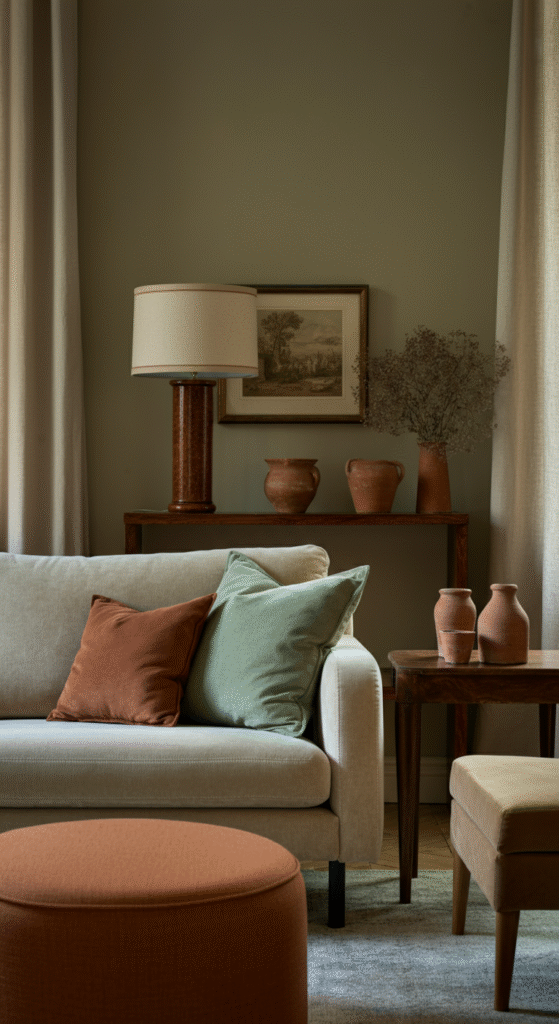
The secret to blending two distinct eras is a cohesive color story. Vintage design often thrives on muted, earthy hues — think olive, tan, cream, and rust — while modern interiors favor crisp whites, blacks, and grays.
Find the sweet spot by choosing a neutral base — soft beige, warm white, or greige (that perfect mix of gray and beige). Then sprinkle in vintage tones like mustard yellow, terracotta, or sage green through cushions, vases, or rugs.
This palette creates an elegant harmony where both styles shine without clashing.
Do you know? The color psychology behind vintage palettes shows that earthy hues create comfort and nostalgia, while muted tones bring calm — making them ideal for a relaxing living space.
For added visual interest, layer different textures in your chosen color scheme — linen curtains, velvet throws, or a jute rug can bring depth and coziness.
3. Let Statement Lighting Tell the Story
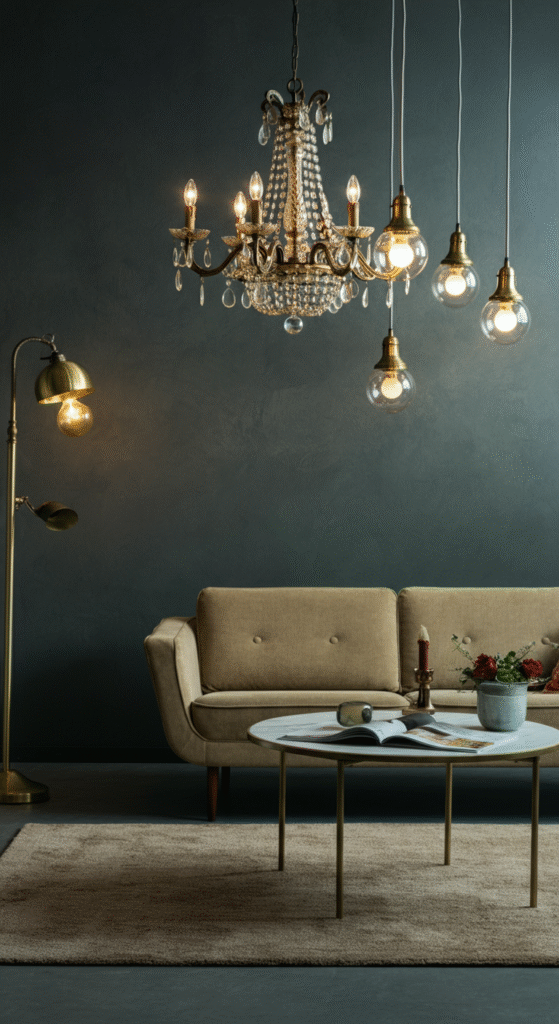
Lighting is more than just functional — it’s the jewelry of your living room. In a vintage modern setup, lighting fixtures serve as sculptural elements that tie the eras together.
Opt for a vintage-inspired chandelier or a sleek modern floor lamp with a brass or matte black finish. Try using globe pendants or cone-shaped shades reminiscent of mid-century modern aesthetics.
Layer your lighting: combine overhead lights, table lamps, and wall sconces for a warm, inviting glow.
Interesting myth: Many believe modern spaces demand harsh, white lighting — but in truth, warm lighting enhances both vintage and modern décor, giving your room that lived-in, golden-hour feel all day long.
If you can, invest in dimmable bulbs or smart lighting systems that let you adjust brightness depending on the mood — bright for social gatherings, softer for cozy evenings.
4. Choose Furniture with Character (But Keep the Lines Clean)
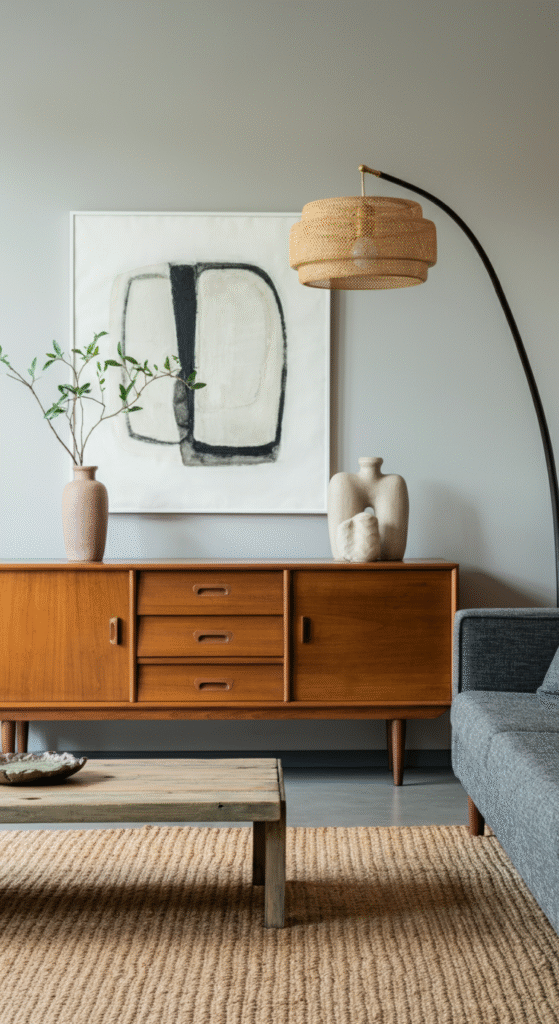
Furniture can make or break your vintage-modern look. Instead of matching sets, aim for pieces that complement each other through design language — clean lines, tapered legs, and natural materials.
For example, a classic mid-century credenza can sit beautifully beneath a contemporary abstract painting. Or pair a modern sectional sofa with a restored wooden coffee table.
What you want to avoid is a cluttered or overly ornate look. Vintage doesn’t mean frilly — it means enduring craftsmanship.
Do you know? The term “mid-century modern” was coined in the 1950s but didn’t gain mainstream design popularity until the 1980s, when collectors and designers rediscovered the elegance of that era’s simplicity.
This proves one thing — timeless design always makes a comeback. And when your furniture tells a story of craft and comfort, your living room becomes a place of both beauty and meaning.
5. Use Art and Accessories to Bridge Eras
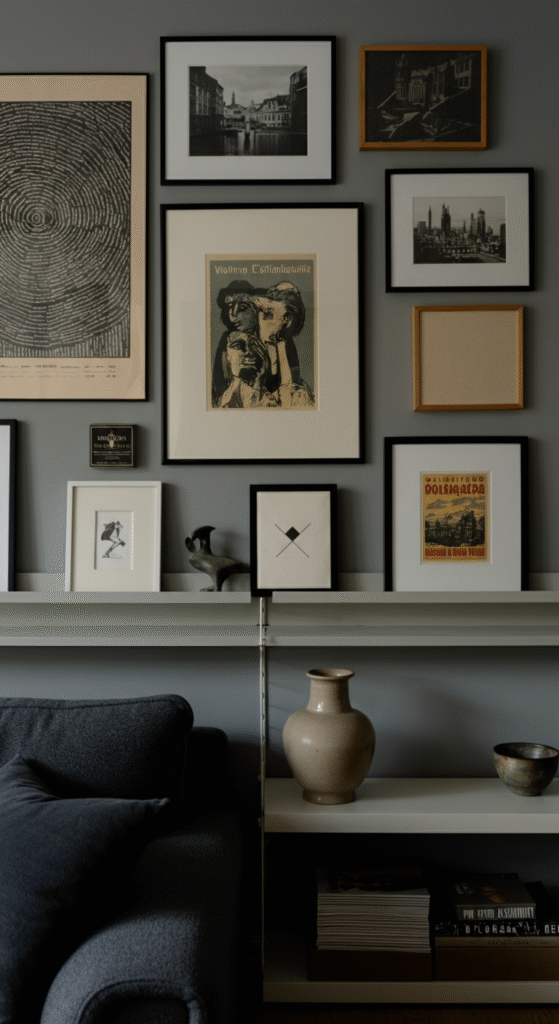
Accessories are where your personal style can truly shine. They’re also the easiest way to tie vintage and modern design together without big furniture changes.
Choose art that feels transitional — abstract prints, minimalist line drawings, or vintage posters framed in sleek, modern frames. You can even hang a black-and-white photograph next to a colorful retro piece for that perfectly balanced tension.
When it comes to decorative objects, think of pairing contrasts: a modern vase on a vintage sideboard, a retro clock on a modern bookshelf, or old hardcover books stacked beneath a sculptural accent.
Interesting fact: Studies show that spaces with thoughtfully placed art increase comfort and focus — your eyes find “visual pauses” in beautiful details, which naturally calm the mind.
Don’t forget mirrors! A round vintage mirror with a gold frame instantly softens modern edges while bouncing light beautifully across the room.
6. Blend Textures and Materials Like a Pro
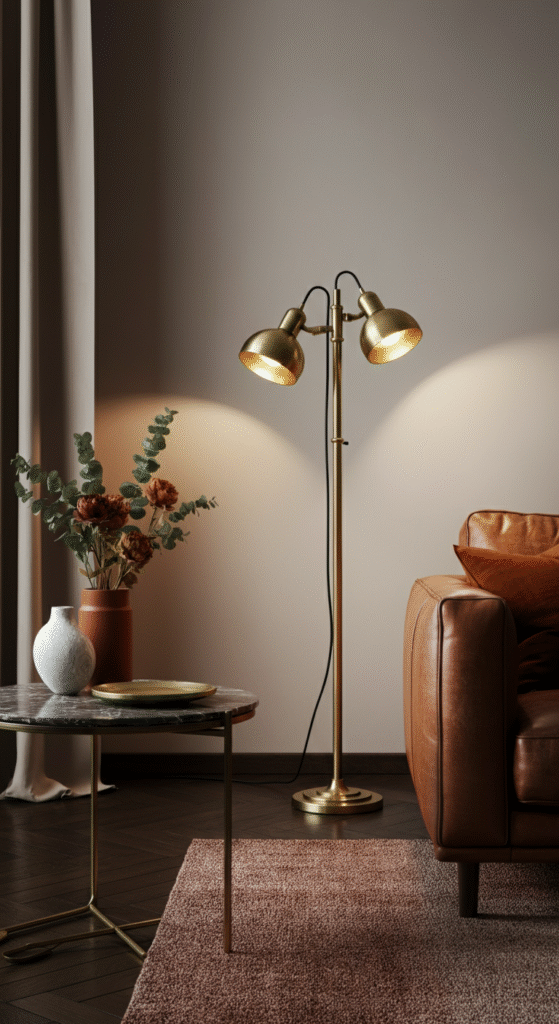
One of the defining traits of the vintage-modern aesthetic is a rich mix of materials — wood, metal, glass, and textiles coming together in layered harmony.
Modern design loves smooth, polished surfaces, while vintage pieces often boast natural patina or handmade imperfections. When you combine these textures, the result is dynamic and inviting.
For example:
- Pair a sleek marble coffee table with a plush wool rug.
- Mix metal accents (like brass lamps or chrome side tables) with organic wood tones.
- Layer linen cushions over a leather couch for tactile depth.
Do you know? Many interior stylists follow the “rule of three” — mixing at least three textures in a single vignette (for example: wood, fabric, and glass) creates visual balance and realism.
Even small touches like woven baskets or vintage pottery can add the warmth your modern space needs. The beauty lies in imperfection — a slightly weathered piece makes your room feel more personal and grounded.
7. Finish with Greenery and Personal Touches
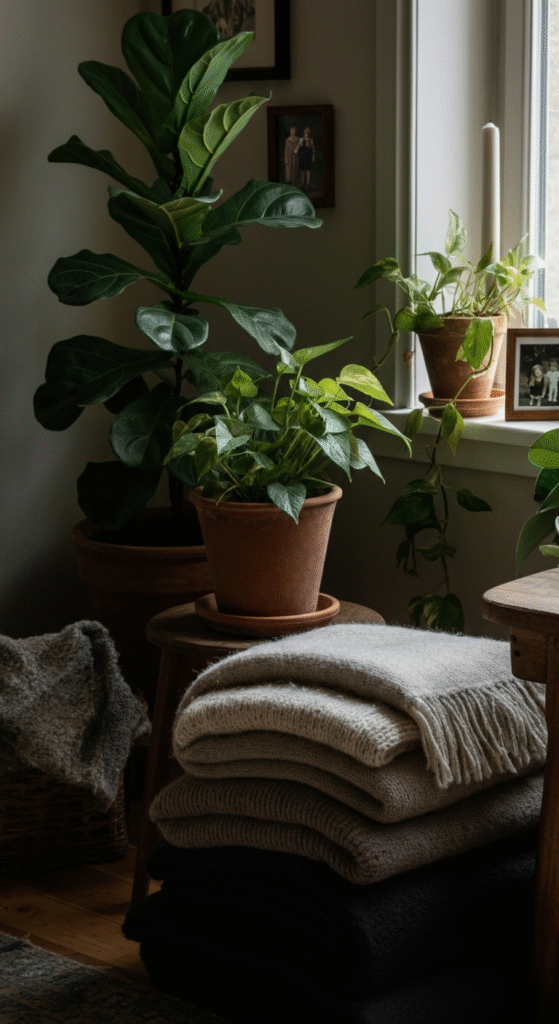
No living room feels complete without life — literally. Plants and personal accents breathe soul into the space, bridging the past and present effortlessly.
Use indoor plants like fiddle leaf figs, snake plants, or pothos to add freshness and a natural, vintage vibe (did you know? Many of these plants were actually popular in 1960s décor magazines).
Place them in terracotta pots or modern ceramic planters depending on your theme. A mix of both can create that perfectly imperfect visual appeal.
Beyond plants, add personal artifacts — vintage photo frames, travel souvenirs, or heirloom ceramics. These make your living room uniquely yours while enhancing its narrative charm.
Remember: a true vintage modern space doesn’t look styled — it looks lived in. That’s the magic you’re after.
Bonus Tip: Layer Rugs and Fabrics for Instant Depth
If your room still feels a bit flat, try layering rugs or throws. A vintage Persian rug under a modern coffee table creates texture and visual grounding, while cozy throws over minimal furniture soften the aesthetic.
It’s also an affordable way to experiment — vintage textiles tell stories through their patterns and color fading, while modern designs keep the composition clean.
Interesting fact: Layering rugs first became a global design trend in the 2010s when designers started reusing antique textiles sustainably. So, when you do it, you’re not just decorating — you’re practicing eco-friendly design with style.
Conclusion
Blending vintage charm with modern sophistication isn’t about following strict design rules — it’s about curating a dialogue between past and present.
A living room that nails the vintage-modern look feels collected over time, not copied from a catalog. It celebrates craftsmanship, nostalgia, and individuality — all while staying effortlessly relevant.
The secret lies in balance: pairing aged beauty with clean simplicity, mixing materials with intention, and personalizing every corner.
So next time you walk into your living room, ask yourself — does it tell a story? Because that’s what great design does — it makes you feel something.
And when you master that, your living room won’t just be a space — it’ll be a timeless experience.
Frequently Asked Questions (FAQs)
Can I mix furniture from different eras?
Yes, absolutely. Mixing furniture from various time periods adds depth and personality. Just maintain balance by ensuring cohesive color tones or complementary materials.
What colors work best for this style?
Neutral bases like beige, gray, and white pair beautifully with vintage-inspired shades like olive, rust, or mustard. These tones create harmony between old and new aesthetics.
How can I make my modern furniture feel vintage?
Incorporate textures — add vintage rugs, distressed wood, or antique accessories. You can also use brass fixtures or patterned fabrics to bring in nostalgic charm.
Is this style suitable for small living rooms?
Yes, it’s ideal for smaller spaces. Mid-century furniture was designed to maximize function and openness, making it perfect for compact rooms.
What kind of lighting fits a vintage modern theme?
Opt for warm, layered lighting — a mix of pendant lamps, sconces, and floor lamps in brass, gold, or matte black finishes works best.
